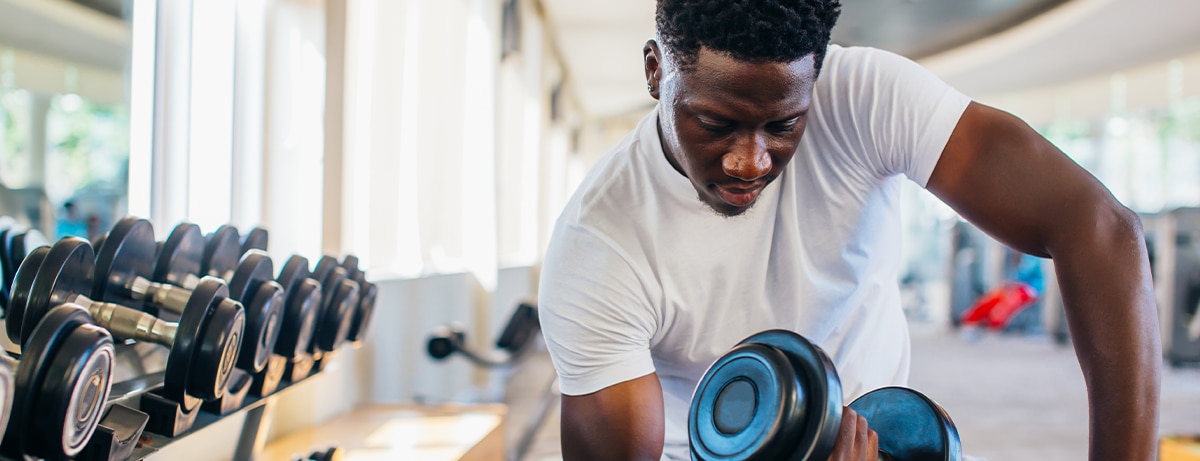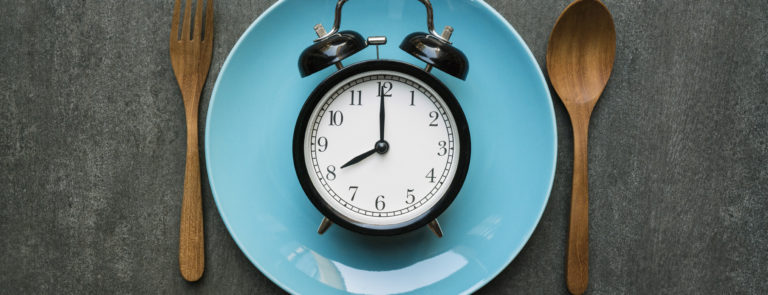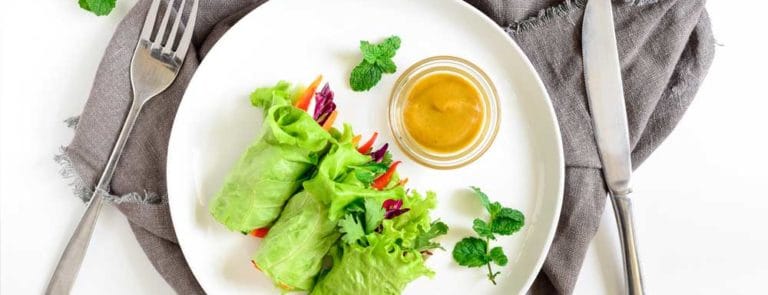15% off £40
Code:QUICK
How to gain weight and muscle safely

Are you looking to gain some weight and muscle? Our article covers everything from safely gaining weight to why you might want to start muscle building.
Summary
1 Why you might struggle to gain weight or muscle
There lots of factors that can determine your weight and muscle mass including: your health, how much you eat, stress, anxiety or worry, genetics...
2Why should you build muscle?
Whether it’s for health or aesthetic reasons, there are many great benefits to muscle gain. Muscle actually increases your metabolic rate, encourage..
3 How to gain weight and muscle healthily
Everyone is different when it comes to their weight and goals, but if you’re looking to gain some weight, it is important to take your time...
Your weight and muscle mass change over the course of your life, whether that’s down to illness, your lifestyle or even a change in appetite. Maintaining a healthy weight and muscle mass is important for day-to-day life, so there are many reasons why you might want to put on some weight or build up muscle, whether it's for health or aesthetic reasons.
But, before doing so, it’s essential to learn how you do it safely. So, from regular exercise to a healthy, balanced diet, you’ll find tips and advice for gaining muscle and weight safely here.
What is a healthy weight?
Before starting your weight gain journey, checking your current weight is essential. A healthy weight looks different for everyone, as it depends on various factors like your height and age.
You can figure out if you’re at a healthy weight using our BMI calculator, which will show you your body mass index (BMI). Generally, if your BMI falls below 18.5, your weight may be too low.1
It is also worth noting that the BMI scale doesn’t consider your muscle mass, as it only looks at weight and height. Muscle weighs more than fat, so more muscular adults might fall into the overweight or obese category, despite their body fat being low.1 So, you can still be perfectly healthy, even if your BMI is low or high.
You should always check with a doctor before starting any weight program. A medical professional can help you determine if there is a reason for your weight, suggest an appropriate plan and offer advice on diet, activities and more.

Why you might struggle to gain weight or muscle mass
There are a lot of factors that can determine your weight and muscle mass.
These include:
- your health
- how much you eat
- stress, anxiety or worry
- your genetics
- your age
- some medications
- your level of physical activity2
For some, these factors can all play a part in gaining weight, but others might struggle to lose weight. Regardless of whether you’re looking to lose or gain some weight, it is a slow process – particularly doing so in a healthy, sustainable way.
Why should you build muscle?
Whether it’s for health or aesthetic reasons, there are many great benefits to muscle gain. Muscle actually increases your metabolic rate, encouraging your body to use more energy and, in turn, burn more calories.3
Building muscle isn’t all about burning calories or bodybuilding. Strength training can help prevent injuries by strengthening your bones, tendons, and muscles. This can make everyday activities much more manageable, such as opening a well-sealed jar or lifting a box of books. When it comes to your core, building up your core muscles can even help to improve your balance and coordination.3

How to gain weight and muscle healthily
Everyone is different when it comes to their weight and goals, but if you’re looking to gain some weight, it is important to take your time. Healthy weight gain depends on many factors, and it is vital to gain lean body mass slowly to allow your body time to adjust.
Here are 4 lifestyle changes you can make to encourage weight gain in a safe and healthy way.

1. Eat more of the right foods
One way to gain weight and build lean muscle is to eat more. It may sound simple, but you need to make sure you’re eating the right foods for healthy weight and muscle gain.
Eating a healthy, balanced diet that gives you the right number of calories for your height, activity level, and age can help you reach a healthy weight and help you build muscle.
Generally, it is recommended that the average adult woman needs around 2,000 calories a day, whilst an adult man needs approximately 2,500 calories per day to maintain a healthy weight.4
You’ll want to increase your calorie intake slightly for healthy weight gain but take it slow. Start by increasing your calorie intake by small amounts at a time instead of dramatically increasing your calories all at once. Why not try using a larger plate or adding an extra spoonful of food to your meals?
You’ll want to make sure you’re eating the right foods too. High-calorie foods full of saturated fat and processed sugars tend to increase body fat instead of lean body mass. Instead, add nutrient-rich foods like fish, chicken, eggs, turkey, tofu, oats, rice, nuts, fruit, and vegetables to your daily diet.5
Make sure you’re drinking plenty of water as well! The UK government recommends drinking 6 to 8 glasses of water daily.6

2. Up your protein intake
To build up lean body mass, you’ll want to increase your protein consumption.
Protein is the second most abundant compound in the body (the first is water) and is vital for giving you energy, repairing body tissue, and building muscles and bones.7
Getting enough protein is important for your day-to-day health regardless of your goals. You can increase your protein intake by including more high-protein foods like eggs, nuts, lean meat, fish and dairy products.9
Protein powders or shakes and protein bars make easy sources of protein and are great for boosting your protein intake on the go too!
3. Start strength training
Strength and resistance training are important for promoting muscle growth, as well as helping you get stronger, leaner, and healthier. It works to increase your muscle strength by making your muscles react against a weight.10
Some strength training exercises that you can do in the gym or at home include:
- Lifting free weights
- Using resistance bands
- Body weight exercises like push-ups
- Using stationary weight machines in the gym
- Strength training classes
For strength exercises, you will want to start with the weights you can manage (but not comfortably) and then increase these each week. It is worth remembering that muscle building happens when you hold the weights in position rather than just quickly moving them up and down.11
However, focusing on strength training doesn’t mean you should forget about cardio activities. Cardio is vital for your health and helps warm up your body, support muscle growth and function, and reduce the chance of getting injured.12
It can take time to see results and bulking up your muscles as your muscle growth rate depends on your age, sex, and genetics. But regular exercise followed by enough rest has shown great results. Rest is particularly important in building muscle, as it encourages repair, decreases the chance of injury, and boosts your progression.13
You’ll want to choose a routine specific to your individual goals and lifestyle, so meeting with a personal trainer could be a good idea to allow you to develop a personalised and professional plan for building muscle.
If you’re looking for inspiration for your next workout, check out our workout plan for gaining weight.
4. Start some healthy habits
Whether you want to gain or lose weight, creating the right habits can greatly impact your results. Here are just some easy lifestyle changes that you can make to encourage healthy weight and muscle gain:
- Try not to drink water before meals - this can make you feel fuller and make it harder for you to reach your calorie intake14
- Eat smaller meals more frequently – this stops you from getting hungry, helps you reach your calorie goals and keeps your metabolism active15
- Use bigger plates at mealtimes - smaller meals encourage you to eat less16
- Get enough quality sleep - sleeping properly is so important for healthy muscle growth17
- Drink milk – keeps your thirst quenched and is an easy way to get more calories18
- Keep a diary - this can help you keep track of your goals, food, and progress19

The takeaway
Gaining weight and muscle healthily is a slow, steady process that takes a long time to achieve, but with the proper diet, exercise, and willpower, it is definitely achievable.
Before starting any weight-related program, it is so important that you check with your doctor to make sure it is safe to do so. They’ll also be able to make suggestions regarding your diet and exercise that will be tailored to your specific needs.
- https://www.nhs.uk/live-well/healthy-weight/managing-your-weight/advice-for-underweight-adults/
- https://www.niddk.nih.gov/health-information/weight-management/adult-overweight-obesity/factors-affecting-weight-health
- https://journals.lww.com/acsm-healthfitness/fulltext/2015/07000/build_muscle,_improve_health__benefits_associated.6.aspx
- https://www.nhs.uk/live-well/healthy-weight/managing-your-weight/understanding-calories/
- https://www.ahajournals.org/doi/10.1161/CIR.0000000000001031
- https://www.nhs.uk/live-well/eat-well/food-guidelines-and-food-labels/water-drinks-nutrition/
- https://jissn.biomedcentral.com/articles/10.1186/s12970-017-0177-8
- https://www.nutrition.org.uk/healthy-sustainable-diets/protein/
- https://www.nhs.uk/live-well/eat-well/how-to-eat-a-balanced-diet/eating-a-balanced-diet/
- https://www.sciencedirect.com/science/article/abs/pii/S0306987718312726
- https://onlinelibrary.wiley.com/doi/10.1111/sms.13375
- https://www.ncbi.nlm.nih.gov/pmc/articles/PMC4523889/
- https://pubmed.ncbi.nlm.nih.gov/21550729/
- https://www.ncbi.nlm.nih.gov/pmc/articles/PMC6209729/
- https://www.cambridge.org/core/journals/british-journal-of-nutrition/article/meal-frequency-and-energy-balance/478F4065A5C5BC1B6E15A8482F8DC239
- https://www.ncbi.nlm.nih.gov/pmc/articles/PMC5598018/
- https://www.ncbi.nlm.nih.gov/pmc/articles/PMC7785053/
- https://milk.co.uk/nutritional-composition-of-dairy/milk/
- https://www.health.harvard.edu/blog/why-keep-a-food-diary-2019013115855
Related Articles
Shop by wellness goal
Sign up for exclusive offers
Plus, get expert advice to support your health & wellness straight to your inbox when you sign up to Holland & Barrett emails.
Read our
privacy policy













